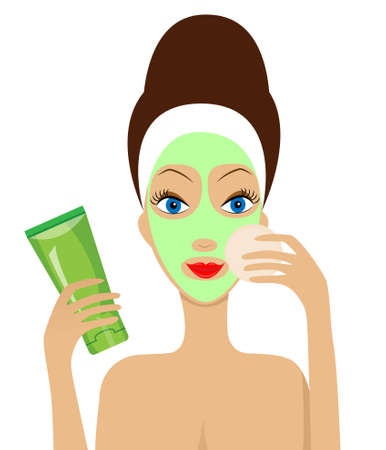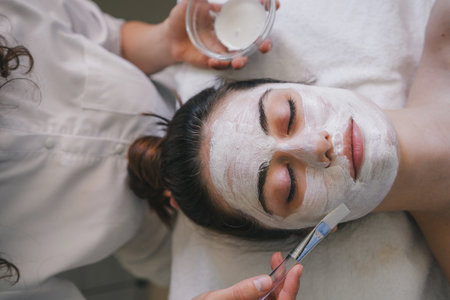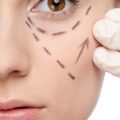Introduction to Chemical Peels
If you’ve ever found yourself wandering through the bustling high streets of London or scrolling through the latest skincare trends on Instagram, chances are you’ve encountered the term “chemical peel.” From my own experience, chemical peels have shifted from being a hush-hush treatment reserved for celebrities to becoming a staple in the everyday beauty routines of countless Britons. But what exactly is a chemical peel, and why has it become such a buzzword in the UK’s skincare scene? At its core, a chemical peel is a professional skin treatment where a specially formulated solution is applied to the face (and sometimes other areas) to exfoliate dead skin cells, stimulate collagen, and reveal a fresher, more radiant complexion underneath. The history of chemical peels is surprisingly rich—dating back to ancient Egypt when Cleopatra was rumoured to bathe in sour milk for its rejuvenating effects. Over centuries, techniques evolved, but the desire for luminous skin remained constant. In recent years, thanks to advancements in dermatology and a growing appreciation for self-care across Britain, chemical peels have surged in popularity. Clinics from Manchester to Edinburgh now offer bespoke treatments tailored to everything from acne scars and pigmentation to dullness and fine lines. For me, the appeal lies not only in the transformative results but also in that quintessentially British pursuit of feeling comfortable in one’s own skin—no matter the weather or season. This guide will take you through everything you need to know about chemical peels in the UK, drawing on both expert advice and personal insight into how these treatments have made their mark on our modern skincare culture.
Types of Chemical Peels Available in the UK
If you’ve ever been curious about how to achieve that fresh-faced, radiant look so often admired on British high streets and in London’s exclusive clinics, exploring the different types of chemical peels available across the UK is a fantastic place to start. From my own journey through various treatments, I’ve discovered that the world of chemical peels here is as diverse as our weather—each type offering unique benefits, tailored to the needs and lifestyles of UK residents. Let’s break down the main categories: light, medium, and deep peels, with a focus on what’s uniquely available in Britain.
Light Peels: The Subtle Refresh
Light chemical peels—often referred to as superficial or lunchtime peels—are popular across UK salons for their minimal downtime and gentle approach. These typically use alpha hydroxy acids (AHAs) like glycolic or lactic acid. Many British clinics offer bespoke blends featuring local skincare favourites such as Medik8’s glycolic treatments or Environ’s lactic formulas. Light peels are ideal for those seeking a mild exfoliation and a subtle glow without needing days off work.
Medium Peels: The Noticeable Boost
For those wanting more dramatic results but who aren’t ready for a deep peel commitment, medium peels are an excellent choice. Trichloroacetic acid (TCA) is commonly used at concentrations between 10-35%. In the UK, you’ll find reputable clinics like Harley Street specialists using Obagi Blue Peel or SkinCeuticals’ TCA blends for clients targeting pigmentation, fine lines, and acne scarring. These peels require several days of recovery but deliver visible rejuvenation—perfect for preparing for special occasions like weddings or milestone birthdays.
Deep Peels: The Transformative Experience
Deep chemical peels are not for the faint-hearted and are less commonly offered outside major cities like London, Manchester, or Edinburgh due to their intensive nature. Phenol-based peels can address significant sun damage and deep wrinkles but entail a longer recovery period and should only be performed by experienced practitioners in CQC-registered clinics. Brands such as Jan Marini’s advanced formulations and select Harley Street doctors provide these transformative treatments, often recommended for clients seeking significant anti-ageing effects.
Comparing Peel Types in the UK
| Peel Type | Main Ingredients | Popular UK Brands/Clinics | Downtime | Best For |
|---|---|---|---|---|
| Light | Glycolic Acid, Lactic Acid (AHA) | Medik8, Environ, Dermalogica | 0-1 day | Dullness, Fine Texture Issues |
| Medium | TCA (10-35%), Jessner’s Solution | Obagi Blue Peel, SkinCeuticals at Harley Street Clinics | 5-7 days | Pigmentation, Mild Scarring, Lines |
| Deep | Phenol, High-concentration TCA | Jan Marini Specialists, Harley Street Doctors | 2+ weeks | Severe Wrinkles, Deep Scarring & Sun Damage |
A Personal Note on Choosing Your Peel in Britain
The variety and quality of chemical peels available here truly reflect British standards—meticulous safety regulations paired with an eye for natural-looking results. Whether you’re after a quick boost before a night out in Soho or a life-changing transformation under expert care on Harley Street, there’s a peel crafted just for your needs. Always consult with a practitioner registered with professional bodies like the British Association of Dermatologists (BAD) or Care Quality Commission (CQC), ensuring peace of mind and exceptional aesthetic outcomes.

3. What to Expect During Your Chemical Peel Experience
Embarking on your first chemical peel in the UK can feel a tad daunting, but knowing what lies ahead makes all the difference. Here’s a hands-on guide to each stage of the process, shaped by both expert advice and personal experience — so you’ll know exactly what to expect from start to finish.
Your Initial Consultation
It all begins with a thorough consultation at your chosen clinic or aesthetician’s studio. In true British fashion, expect a warm welcome and a cup of tea while your practitioner assesses your skin type, discusses your goals, and reviews your medical history. This is the perfect time to ask questions about the types of peels available — from gentle glycolic peels to more intensive TCA options — and to address any concerns you might have. Your practitioner will recommend a tailored treatment plan based on your individual needs and lifestyle.
The Day of Your Peel
On the day itself, youll be invited to lie back in a comfortable treatment chair (often with calming music in the background). After cleansing your skin thoroughly, your practitioner will apply the chosen peeling solution. You may feel a mild tingling or warming sensation — perfectly normal and nothing to fret over. Most British clinics are keen on ensuring comfort, so dont hesitate to mention if you feel anything stronger than a gentle tingle. The solution is usually left on for several minutes before being neutralised or removed.
The Sensation: What Does It Really Feel Like?
Expect a sensation somewhere between slight warmth and a light sunburn — never unbearable. If youre used to facial treatments or masks, it’s not dissimilar but often described as more invigorating. My first peel in London felt like a refreshing wake-up for my skin; afterwards, there was only mild redness and tightness.
Immediate Aftercare & Recovery
Once the peel is complete, your skin may appear pinkish, similar to after a brisk walk along Brighton seafront on a chilly morning. Your practitioner will apply soothing serums and SPF, offering tips specific to British weather—think umbrella-friendly skincare and protection against unpredictable drizzles and sunshine alike. You’ll be advised to avoid heavy make-up and direct sunlight for several days; most people return to daily life immediately, though some prefer a quiet evening in with a good book and plenty of hydration.
Realistic Expectations: Results & Downtime
Depending on the depth of your peel, you might notice mild flaking after a few days—a sign that fresher skin is emerging beneath. By week’s end, you’ll likely see a brighter complexion with smoother texture. Remember: in Britain’s ever-changing climate, post-peel skin can be especially sensitive, so diligent aftercare is key for that radiant glow.
4. Benefits and Risks: A Balanced View
Embarking on the journey of chemical peels in the UK is both exciting and, understandably, a little nerve-racking. Having experienced my own transformation through this treatment, I can vouch for the glowing results—but as with any cosmetic procedure, it’s crucial to weigh both the rewards and the realities. Here, we’ll explore real-life outcomes, discuss potential side effects, and highlight safety measures—all firmly rooted in British regulations and standards.
Real Results: What Can You Expect?
The British beauty scene prizes subtlety and elegance, and chemical peels are often chosen for their ability to revive tired complexions without looking “overdone.” Depending on your skin type and the peel strength, you might see:
- Smoother skin texture
- Reduced appearance of fine lines
- Brighter, more even skin tone
- Diminished acne scars and pigmentation
- A radiant glow that feels oh-so-fresh
Possible Side Effects: What to Watch Out For
No beauty treatment is entirely without risk. Chemical peels—especially if not administered by a qualified professional—can cause unwanted reactions. Here’s a quick glance at what you might encounter:
| Side Effect | Description | Likelihood (with proper care) |
|---|---|---|
| Redness | Mild redness similar to sunburn post-treatment | Common (temporary) |
| Peeling or Flaking | Skin may peel for several days after treatment | Common (expected) |
| Sensitivity | Tingling or sensitivity to sunlight | Moderate (manageable) |
| Pigmentation Changes | Darkening or lightening of treated areas | Rare (if guidelines followed) |
| Infection/Scarring | If aftercare or hygiene is poor | Very rare (with reputable clinics) |
Safety Measures: The British Standard of Care
The UK boasts some of the world’s most rigorous health and safety regulations for cosmetic treatments. Clinics must be CQC-registered (Care Quality Commission), practitioners should hold appropriate qualifications (such as Level 4 in Skin Peeling Treatments), and all products used must comply with UK/EU cosmetic standards. Always confirm:
- Your practitioner’s credentials and insurance status
- CQC registration of the clinic (for medical-grade procedures)
- A thorough consultation and patch test prior to treatment
- Clear aftercare guidance tailored to British weather and lifestyle factors (think: rain, pollution, variable UV exposure!)
Your Experience Matters Most
I found that the best clinics in the UK prioritise patient education, transparency, and personal comfort. If something feels off—or if aftercare isn’t up to scratch—don’t hesitate to ask questions or seek a second opinion. Ultimately, your peace of mind is just as important as your radiant new skin.
5. Choosing the Right Clinic and Practitioner
When it comes to chemical peels, finding a reputable clinic and a qualified practitioner is absolutely paramount. My own experience taught me that, in the UK, not all clinics are created equal, and there’s quite a bit of nuance in separating seasoned professionals from the rest. Here are my personal tips for navigating this crucial step in your chemical peel journey.
What Credentials Should You Look For?
In the UK, practitioners offering chemical peels should ideally be registered with professional bodies such as the General Medical Council (GMC) for doctors, the Nursing and Midwifery Council (NMC) for nurses, or the General Dental Council (GDC) for dentists. These accreditations ensure that your practitioner has received proper medical training and adheres to strict standards. Don’t hesitate to ask about their qualifications—true experts will gladly share their credentials and experience.
Spotting Real Experts vs. Pretenders
A genuine expert will always carry out a thorough consultation before recommending any treatment. They’ll take time to understand your skin type, discuss your expectations, and explain potential risks and aftercare. Watch out for practitioners who rush this process or promise miracle results—these are red flags. Also, look for clinics that maintain high hygiene standards and use reputable products; you should feel comfortable and confident in their environment.
Personal Tips From My Own Search
I found it helpful to read independent reviews on trusted UK platforms like Trustpilot or Google Reviews, as well as seeking word-of-mouth recommendations from friends who had positive experiences. Visiting the clinic beforehand gave me a sense of their professionalism and ethos. Lastly, don’t be swayed by flashy deals or deep discounts—quality always comes at a fair price when your skin’s health is at stake.
Choosing the right clinic and practitioner is an investment in both your safety and satisfaction. Take your time, do your research, and trust your instincts—your skin deserves nothing less.
6. Aftercare and Long-Term Skincare Following a Peel
So, you’ve just treated yourself to a chemical peel and your skin is feeling fresh, revitalised, and more radiant than ever. But the journey doesn’t end here—proper aftercare is absolutely essential to protect your investment and enjoy glowing results for weeks to come. Here’s my first-hand experience and some expert aesthetic tips, alongside local UK product recommendations, to help you nurture your complexion post-peel.
Immediate Aftercare Essentials
Right after your peel, your skin will be more sensitive than usual. My go-to advice? Always listen to your practitioner’s guidance, but in general, avoid touching your face unnecessarily, keep it clean with a gentle cleanser (like Cerave Hydrating Cleanser, widely available at Boots), and never pick or peel flaking skin. Instead of reaching for harsh exfoliants or actives, opt for fragrance-free hydrating products. I personally love La Roche-Posay Cicaplast Baume B5, which calms irritation and supports healing—a cult favourite among UK skincare enthusiasts.
Sun Protection: The Non-Negotiable Step
The British weather may often be grey, but don’t let that fool you—post-peel skin is highly susceptible to UV damage even on cloudy days. I always reach for a broad-spectrum SPF 50; Altruist Dermatologist Sunscreen is a brilliant, affordable option made right here in the UK. Remember to reapply every two hours if you’re outdoors, even if it’s just for a quick stroll through Hyde Park or along the Cornish coast.
Moisture & Barrier Repair
Your skin barrier needs extra TLC after a chemical peel. Rich moisturisers like E45 Cream or Aveeno Daily Moisturising Lotion, both beloved by Brits for their simplicity and effectiveness, help lock in hydration without overwhelming sensitive skin. For an added boost, I sometimes use The Inkey List Hyaluronic Acid Serum—another high-street hero—for plumpness and comfort.
Long-Term Glow: Incorporating Actives Safely
Once any peeling has subsided (usually after about a week), you can gradually reintroduce active ingredients like vitamin C or gentle retinoids to maintain brightness and encourage collagen production. The No7 Protect & Perfect Intense Advanced Serum, a staple from Boots’ own range, is perfect for easing back into actives while supporting anti-ageing benefits.
Aesthetic Insider Tip:
If you want to keep that ‘just-had-a-facial’ luminosity, consider regular at-home treatments such as sheet masks from Garnier’s Moisture Bomb range, or book in for maintenance peels every few months at reputable clinics across London, Manchester or Edinburgh.
The British Approach: Less is More
I find that UK skincare culture really celebrates minimalism—think fewer products but better quality and efficacy. Embrace this ethos by focusing on consistency with gentle cleansing, daily SPF, ample moisture, and only adding targeted serums as needed. Your skin will thank you with long-lasting radiance that feels natural and effortless.
By following these aftercare steps and incorporating local favourites into your routine, you’ll ensure your post-peel glow is not only beautiful but beautifully British too.
7. Frequently Asked Questions about Chemical Peels in the UK
Addressing British Concerns and Practical Advice
Chemical peels are steadily gaining popularity across the UK, but its only natural to have a few burning questions before booking your first appointment. Drawing from my own experiences and those of fellow Brits, here’s a round-up of the most commonly asked questions—alongside honest, practical advice tailored for life in the UK.
Are chemical peels safe for British skin types?
Yes, when performed by a qualified practitioner, chemical peels are generally safe for all skin types common across the UK, including fair, freckled, or rosacea-prone complexions. Always insist on an initial consultation so your practitioner can recommend a peel suited to your skin’s unique needs and sensitivities often seen in our climate.
How much downtime should I expect?
This varies depending on the strength of your peel. Light “lunchtime” peels typically require little to no downtime—perfect for nipping out during your break. Medium or deep peels may involve visible peeling and redness for several days up to a week. Plan accordingly around work and social events; there’s no shame in donning a chic hat or staying home with your favourite telly during recovery!
Can I get a chemical peel in winter?
Absolutely! In fact, many UK practitioners recommend scheduling peels during autumn and winter when our sun is less intense. This reduces the risk of post-treatment pigmentation and makes aftercare easier—think jumpers, scarves, and cosy evenings indoors.
Is it painful?
Mild tingling or stinging is common, especially with stronger acids, but discomfort is usually brief. Your clinician will talk you through what to expect and can tailor the treatment intensity to suit your preferences. Most people describe it as momentary rather than unbearable.
Will I need time off work?
If you opt for light peels, you’re unlikely to need any time off; just expect some mild flakiness or pinkness. For deeper treatments, it might be wise to schedule your appointment ahead of a weekend or take a couple of days’ leave—a good excuse for some well-deserved self-care!
What results can I realistically expect?
Chemical peels can brighten dull skin, smooth fine lines, fade pigmentation, and even out texture over time. While one treatment delivers a lovely glow, a course of several sessions—spaced as advised by your practitioner—yields the most noticeable improvements. Patience and consistency are key.
Where should I go for a chemical peel in the UK?
Seek out reputable clinics or registered practitioners with experience treating British skin types and access to high-quality products. Don’t hesitate to ask for credentials or client testimonials—it’s not being fussy; it’s being wise! The best clinics will always prioritise your safety and comfort.
Final Thoughts
If you still have questions after reading this guide, don’t hesitate to reach out to local practitioners—they’ll be happy to walk you through everything before you commit. Remember: glowing skin is absolutely achievable here in Blighty with the right approach and professional care.


